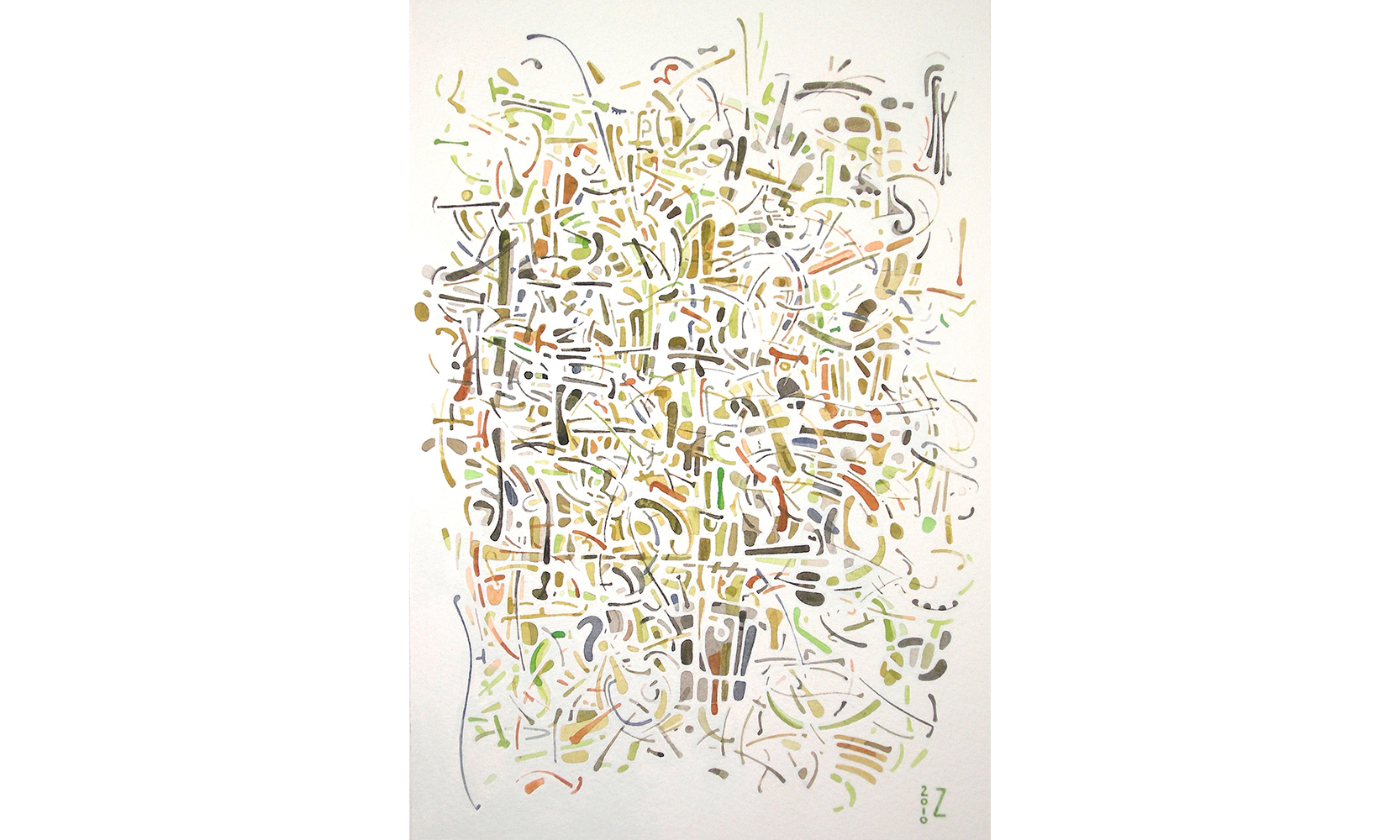Night and Day
Each of these works is an archeology of language and imagistic remains, unearthed, but offering more questions than answers. Here’s a set of mismatched shapes that elude the grid but hunt for syntax. It is, in fact, the larger woven space that gives definition to the shapes themselves as well as the calligraphic movements and the overall reinforced structure. There’s a bit of wandering you are called to, moving between marketplace to burial grounds.
Primal forces too are at work: classified under “acts of God”: earthquake, tornado, lightning fire, flood. Nature remakes our fragments and render over time its own signature: the lake’s lapped edge, the landscape’s clearing, an island’s separation. What was once an angular corner is now smoothed over, given back to the riverbeds and oceans.
Harold Rosenberg wrote that art at its most essential is allusive: it exists as a referent to something else. Art is a signifier, not just a symbol, and at its best, it points away from itself toward something more profound about what it means to be alive in a certain time, in a certain place.
These are all human marks, drawing acts in a conscious moment immediately tactile, visual, reflective, fragments suggesting a wholeness set as a witness. Every mark, every shape becomes a first edition informed by ancestral stories, meta-narratives that still resonate with comedy and tragedy, romance and loss, tears and humor. I’m aiming for an honesty here.




